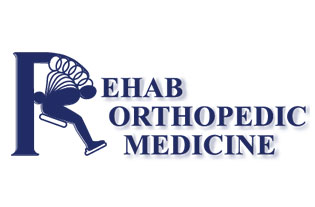10 Quick Questions to Assess Your Orthopedic Knowledge
We recognize that patients these days come armed with a wealth of knowledge. Resources are at virtually everyone's fingertips; and, no one knows what is going on in your body better than you, right? We created this Orthopedic IQ Test to confirm what you may already know, and perhaps clear up some misconceptions along the way.
Go ahead. Give it a shot! We're not keeping score, and you never know what valuable nuggets of information you may uncover.
Which condisiton typically results from a twisting motion that stretches a ligament too far?
- A. Inversion Ankle Sprains
- B. Acute Bursitis
- C. Meniscal Tearing
- D. Disk Herniation
- E. All of the Above
- F. None of the Above
Answer: A - Inversion Ankle Sprains
Meniscal tearing can result for acute twisting trauma to the knee; however, the meniscus is a disk made of cartilage, not a ligament. The most common injury caused by twisting is the ankle sprain. Inversion ankle sprains result from twisting the foot inward, and they account for 90% of ankle sprains. Eversion ankle sprains occur when the foot is twisted outward, and pain results on the inner side of the ankle joint. The severity of the sprain can range from Grade 1 to Grade 3 with the latter indicating a complete tear of the ligament. But, only in unusual circumstances is surgery considered a treatment for an ankle sprain.
If you experience sudden intense pain in your lower back that is not caused by any known serious medical condition, what is your best course of action?
- A. Take Ibuprofen to reduce the swelling and stay still until it takes effect.
- B. Ignore it and see if it goes away.
- C. Call someone, preferably 911, because it could be a heart attack.
- D. Take some pain meds and stay active.
Answer: D - Take some pain meds and stay active.
While back pain could certainly signify a heart attack, lower back pain without any other symptoms or known condition is not the most probable cause. Gently working through the pain by taking medication (if necessary) and staying as active as possible is recognized as the most effective first line of treatment. If you continue to feel throbbing, aching or stabbing pain, it’s a sign to take it easy. No pain, no gain is not the strategy here. Gentle movement, however, can often alleviate the problem or stimulate the blood flow necessary to aid healing. If this doesn’t work, then you move on to Plan B!
Achilles Tendonitis is a painful injury that can become chronic. What are the treatment options at that point?
- A. Stretch it out.
- B. Buy a new pair of heels.
- C. Get tested for food allergies.
- D. Get ultrasound therapy.
- E. All of the Above
- F. None of the Above
Answer: E - All of the Above
Because the injury is nearly impossible to rest completely, Achilles Tendonitis can easily become chronic. It is important to address the pain immediately. If not, don’t worry, there is a lot that can be done. Tendonitis actually responds to all of the options above. Stretching keeps the tendon from contracting to the point that it difficult to move. Shoes with a 1 inch heel and an inflexible sole allow you to walk with the least amount of strain to the injured area. Ultrasound is a safe, noninvasive treatment that promotes healing and reduces inflammation by causing a histamine response in the body. And, believe it or not, food allergies and intolerances can cause inflammation throughout the body that affect the tendons! So, it may not be the most likely cause, but diet should always be considered if other treatments do not prove to be sufficient.
Achilles Tendonitis is a painful injury that can become chronic. What are the treatment options at that point?
- A. Appendicitis
- B. Arthritis
- C. Kidney Stones
- D. Urinary Tract Infection
- E. All of the Above
- F. None of the Above
Answer: B - Arthritis
At some point in your life, you may start to notice that changing positions after being in the same one for a while is painful. That is most likely arthritis, and it can be managed. It is important to realize, however, that serious medical conditions can cause back pain, including appendicitis, kidney disease or urinary tract infections. Other things could also be going on. Back pain can result from a traumatic accident, a simple sprain or strain, fibromyalgia, a fractured vertebra or a ruptured disc.
On average, how long does physical therapy take to be effective for non-paralyzing neck injuries?
- A. 3 weeks
- B. 3 months
- C. 1 year
- D. None of the Above
Answer: D - None of the Above
A person's response to physical therapy is relative to that individual and their current health status, their particular injury, and how compliant they are with the treatment. So, there really is no "average" recovery time for a neck injury. What we do know is that state-of-the-art equipment like our Med-X machines are very effective at pinpointing the problem, determining its severity and safely rehabilitating those who have injuries to the cervical spine.
On average, how long does physical therapy take to be effective for non-paralyzing neck injuries?
- A. When pain medication is not enough to make it tolerable
- B. After a few days
- C. Give it three weeks
- D. When it intermittently returns over the course of 2 or 3 months
- E. None of the Above
- F. Immediately
B - After a few days
Back pain can be an early warning sign for a serious condition. So, you typically don’t need a doctor as soon as you feel pain, but only wait two or three days before calling your doctor. It is likely that the problem is musculoskeletal, and early treatment can prevent the additional injuries that can occur when we change how we move to accommodate pain. Most back pain will resolve itself over time, so waiting a couple of months may do the trick. But, to be on the safe side, let your doctor do the diagnostics, give you a treatment plan, and make sure that appendicitis, kidney disease or urinary tract infections are not of concern for you.
What is the best way to prevent back pain?
- A. Always maintain good posture
- B. Avoid heavy lifting
- C. Do yoga
- D. Get regular exercise
Answer: D - Get regular exercise
While maintaining good posture is a good idea, regular exercise is the universal ingredient to a strong and healthy back. Yoga is good too; but, only with proper training. And, actually, hyper-flexibility can occur in those who do a great amount of stretching without an equal amount of muscle building exercises. And, by the way, hyper-flexibility causes pain, too. Is heavy lifting bad for your back? No, it's not, just as long as you use the proper technique and have the strength to handle the load!
For about 50% of those experiencing back pain, the only effective treatment is surgery.
- A. True
- B. False
Answer: B - False
People tend to worry a lot when it comes to their back. After all, the spine is a critical part of the central nervous system. That makes surgery risky and not addressing the problem risky, too. Fortunately, there are plenty of effective non-invasive back pain treatment options for the estimated 95% of individuals who don't need surgery for their back pain.
A physiatrist is another name for physical therapist.
- A. True
- B. False
Answer: B - False
A physiatrist is actually a medical doctor who specializes in Physical Medicine and Rehabilitation (PM&R). Their primary goal is to restore physical function through non-surgical means. Patients typically seek out a physiatrist for pain relief. In our practice, Dr. D’Auria successfully treats a wide range of injuries to the musculoskeletal system, which includes the bones, joints, muscles, ligaments and tendons. He is known for his exceptional success in the care of neck and back injuries.
When is physical therapy most useful?
- A. Before surgery
- B. After surgery
- C. Instead of Surgery
- D. All of the Above
Answer: D - All of the above
Physical therapy is useful whenever you have an injury, weakness, pain, or limited mobility and need relief. Patients are often surprised by how much physical therapy is needed AFTER surgery. Surgery only removes the problem, but there is actually a lot of recovery involved. Physical therapy typically takes the leading role in recovery, but is an effective first-line treatment for many ailments. Contact our office today and we'd be happy to talk to you about your own situation.
Thank you for taking the Rehab Orthopedic Medicine IQ Test!
For more information on non-surgical orthopedic rehabilitation and how we can help, please contact us today.

